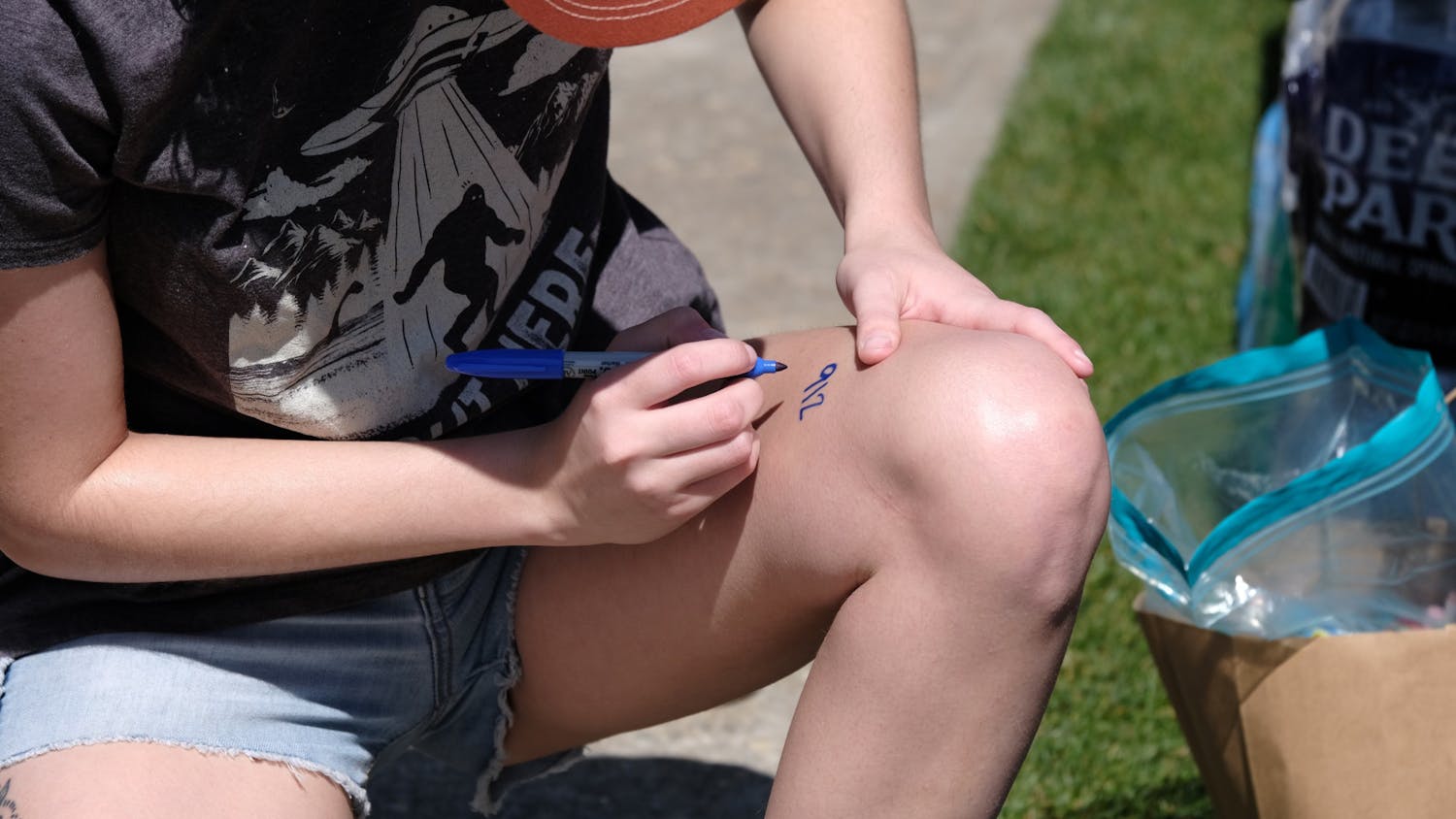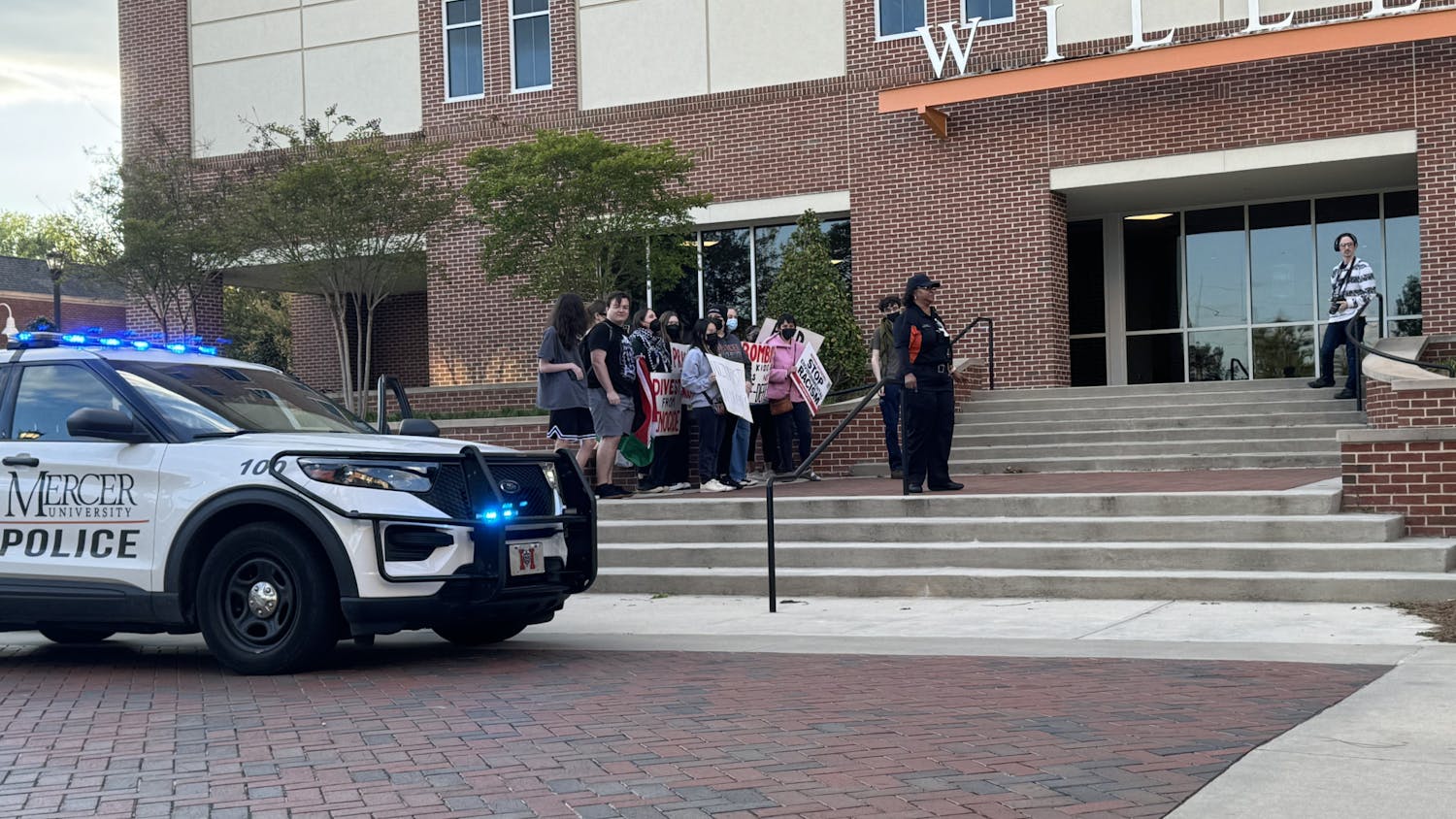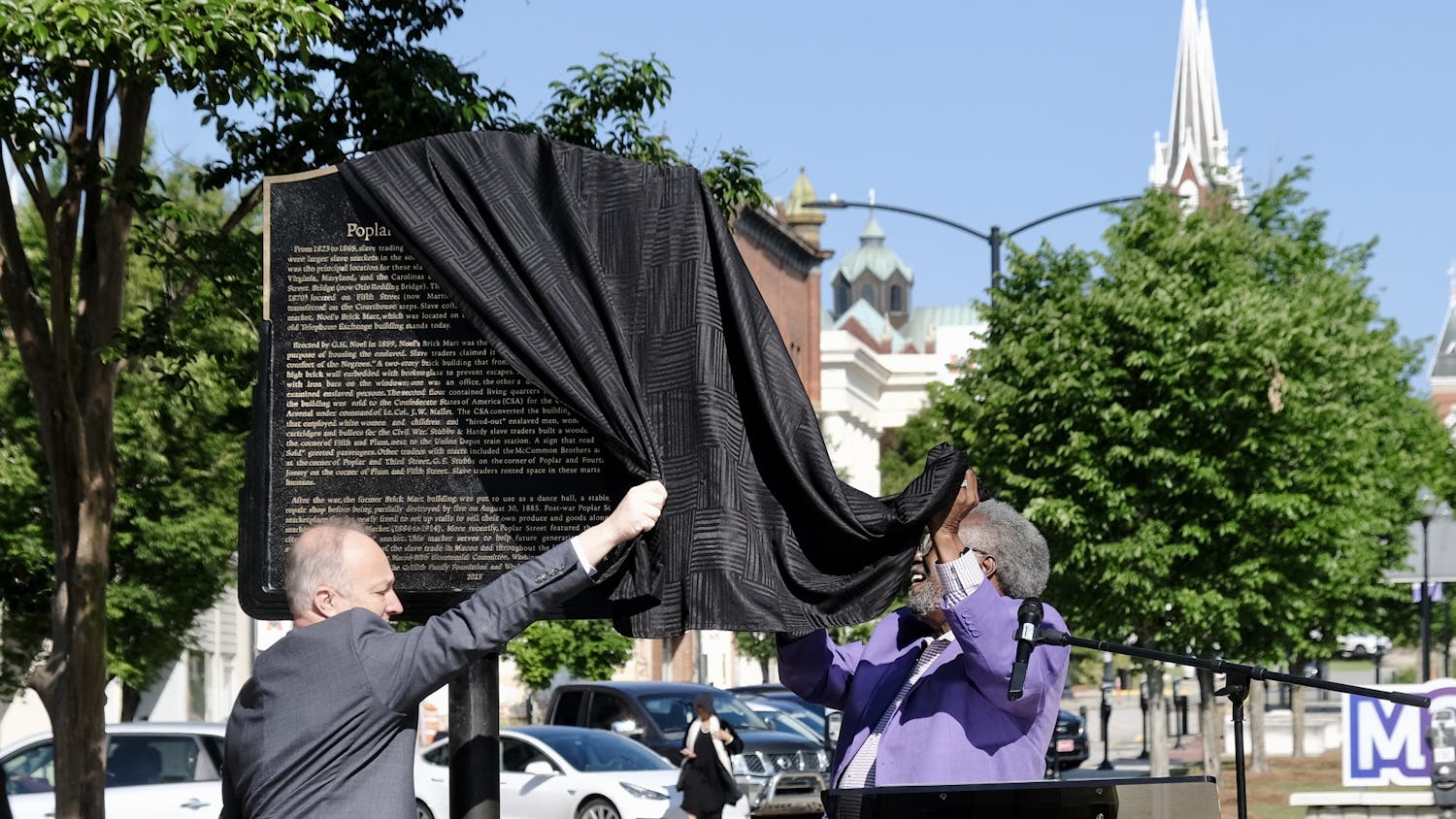
On Sept. 28, Mercer University students, faculty and members of the press from around the nation gathered together as the people who made the Center for Collaborative Journalism possible ceremoniously dedicated the new center.
The dedication of the center was led by Mercer President William D. Underwood and featured representatives from the University, as well as the John S. and James L. Knight Foundation, Peyton Anderson Foundation, Georgia Public Broadcasting, The Telegraph, and the National Journalism Advisory Board.
“We formally dedicate this Center, and those who work, teach, and study in it, to advance the freedoms guaranteed by the First Amendment,” said President Underwood.
The Knight Foundation has been heavily involved in supporting the Center for Collaborative Journalism, awarding a $4.6 million grant to the cause. In addition the Peyton Anderson Foundation awarded an addition $1 million grant to fund the newsroom located in the Center.
The Center for Collaborative Journalism, which combines Mercer University’s Journalism and Media Studies department, The Macon Telegraph, and Georgia Public Broadcasting radio, will open up new opportunities for media in the Macon community.
“Who will benefit from this Center?” asked David Hudson of the Georgia Press Association. “We, the citizens. We, who will be able to read and listen with confidence that the highest standards of journalism have been followed.”
The ceremony concluded with the ribbon cutting, performed in three stages. Mercer University’s Journalism and Media Studies professors, Dr. Cynthia Gottshall, Dr. John Chalfa, and Dr. Jay Black were awarded the opportunity.
Three students in the department were also given the honor. Society for Collegiate Journalists (SCJ) President and Cluster Copy Editor Erica O’Neal, Cluster writer and Mercer Radio personality Joshua Glasscock, and SCJ Secretary, Cluster writer, Mercer Radio host and Mercer 99 officer Richard Hawkins stood side by side as the cut the final ribbon, officially concluding the dedication.
The audience was made up of journalists, students, and community members, some having traveled a great distance for the event.
One person who has caught wind of the experiment is Johnathan Gordon from Brookstone College Preparatory School in Columbus, GA.
“(The Center for Collaborative Journalism) is a really big incentive (to enroll at Mercer University) because I’ve always been interested in journalism and been interested in the media,” said the sixteen-year-old. “And it being such a big market right now, because everything is media and technology.”
Many prospective students like Gordon believe that the Center will provide greater opportunities for journalism and media students.
“It would be a great opportunity to come to a school that has one of the biggest centers for collaborative journalism in the state, maybe the nation,” explained Gordon.
What interests this young student the most?
“Television and radio broadcasting. Either one I’m interested in,” said Gordon.
After the dedication, the high school students were invited to attend a free lunch anywhere in the Mercer Village. As students dined on Margarita’s, Ingleside Village Pizza, Jittery Joe’s or Francar’s, they had the opportunity to not only talk to one another, but also many members of the press and Mercer University.
The final event of the day was a panel located in Fickling Hall inside the McCorkle Music Building, entitled “Enhancing Local Journalism in the Digital Age: How You Do It and Why It’s Important”. The panel members included Joaquin Alvarado, chief strategy officer for the Center for Investigative Journalism, Dr. Jennifer Greer, head of the journalism department at the University of Alabama, Sherrie Marshall, executive editor of The Telegraph, Tim Regan-Porter, director of the Center for Collaborative Journalism and co-founder of Paste Magazine, and Teya Ryan, president and executive director of Georgia Public Broadcasting. The panel was moderated by Eric Newton of the Knight Foundation.
Those on the panel discussed how the Internet, including social networking and digital media, is affecting local news and how local outlets, the Center for Collaborative Journalism specifically, is trying to use it in their favor.
“It’s important. The pace of change is not slowing down,” said Tim Regan-Porter. “Through all innovations, the fundamentals of journalism remain the same.”
“The innovation is the tool, not the art,” added Teya Ryan. The panel also took the opportunity to answer questions from the audience. Johnathan Gordon, a student, spoke about the issue with a perceived lack of focus on elementary and middle school students.
“Why hasn’t there been a newspaper about kids where they can get their names in the paper?” asked Gordon.
“You should get a Knight Grant to start that,” replied Joaquin Alvarado to the loudest cheers of the day.
Alvarado’s remark was not in jest, as the panel made it clear that future journalism students like Gordon will be the ones to revolutionize the industry.
“This is the best time to be a journalism student,” said Dr. Jennifer Greer. “You are going to change the field.”
The impact of local media on the community was the topic of the day and was constantly mentioned by those participating on the panel as a way to improve both the media and the people who rely on it.
“There are times when you can show the individual process,” explained Ryan. “The community is a participant in the story.”
“You have to be close enough to catch their cold for it to count as community engagement,” laughed Alvarado.
As the panel drew to an end, Eric Newton thanked everyone for coming and left them with one final piece of advice.
“If you don’t like the news,” said Mr. Newton, “go out and make it for yourself.”
New Center receives inaugural dedication





